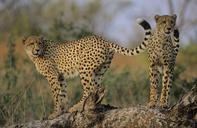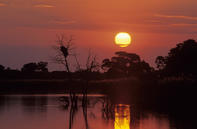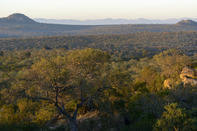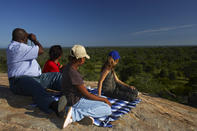Skukuza Creation and Destruction
When the Sabi Reserve was proclaimed at the turn of the twentieth century, it was decided that the protected area should be cleared of all permanent human habitation. This meant that the several thousand African villagers living within the confines of the new reserve had to be relocated.

Never one to shirk from his responsibilities, James Stevenson-Hamilton swiftly arranged for the removal of “black squatters… settling them closer to their traditional tribal chiefs in adjacent areas”. This prompted the natives to nickname the park warden ‘Skukuza’, derived from the Zulu ‘sikhukhuza’ – he who sweeps or scrapes clean.
By 1905, however, this policy was reversed and around 3000 native inhabitants were allowed to stay in the reserve, as long as they obeyed the anti-hunting regulations.
The reasons for this about-face were not philanthropic. Rather, the Africans were now considered ‘tenants’ on Crown Land and, as such, they were liable for an annual rent that had to be paid to the white government. This fee could be paid either in cash or labour, and the ‘squatters’ became quite a valuable resource that could be exploited.
An Unfair Land Grab

This meant that the warden and rangers were now responsible for the management and control of the black ‘tenants’ who lived in the reserve. To streamline administration, the warden was named the Native Commissioner for the entire area. In addition to collecting taxes and/or labour commitments, the commissioner also had to handle native ‘insubordination’.
Any breaches of the law were dealt with decisively, with the most common being poaching and trespassing. As a result, many Africans began to resent the new game reserve. To them, it was a place of exclusion; an unfair land grab that robbed them of their traditional homesteads and livelihoods. This attitude persisted for much of the 20th century and most of the country’s national parks were shunned by the black populace as being a white man’s playground.
Forced Removals

This lingering resentment was entrenched in the 1950s when the remaining black population of the Kruger National Park was finally moved out for good. This time, however, the relocations were about more than conservation or financial considerations. Racial segregation had become the bedrock of South African society, and politics dictated that each racial group should be allowed to ‘develop separately’ in their own areas.
The first of these forced removals took place in 1956, when the Kruger National Park and Department of Bantu Affairs effected a land swap of 1000 morgen in the Numbi Gate area. The Africans were then re-settled in their new ‘location’ and the animals were chased over into the Kruger National Park.
In the same year, some members of the Makuleke community were also removed from their lands in the Pafuri district. Additional land (and people) exchanges were made in 1957, 1960 and 1969. Tellingly, the first boundary fences in the park were erected at these times, to prevent the relocated people from moving back into the reserve.
A Slow Process

Today, SANParks is trying to reverse the low opinion that many black people have towards the national parks. Efforts are being made to bring more black visitors into the game reserves, and the indigenous people of the country are being encouraged to consider conservation areas as a source of national pride.
It is a slow process, but the tide is definitely turning. One park, in particular, Mapungubwe, is proving to be very popular with black tourists and SANParks is trying to extend this model to their other reserves. However, turning our national parks into a more inclusive place may not be a simple matter of ideology.
By David Fleminger The Kruger National Park (KNP, or simply ‘Kruger’, for short) is the premier game reserve in South Africa. Offering excellent Big Five g...
The Kruger National Park (KNP, or simply ‘Kruger’, for short) is the premier game reserve in South Africa. Offering excellent Big Five g... Skukuza is the largest of all the camps in the Kruger National Park, and is also the administrative headquarters. The camp is spacious, well...
Skukuza is the largest of all the camps in the Kruger National Park, and is also the administrative headquarters. The camp is spacious, well...